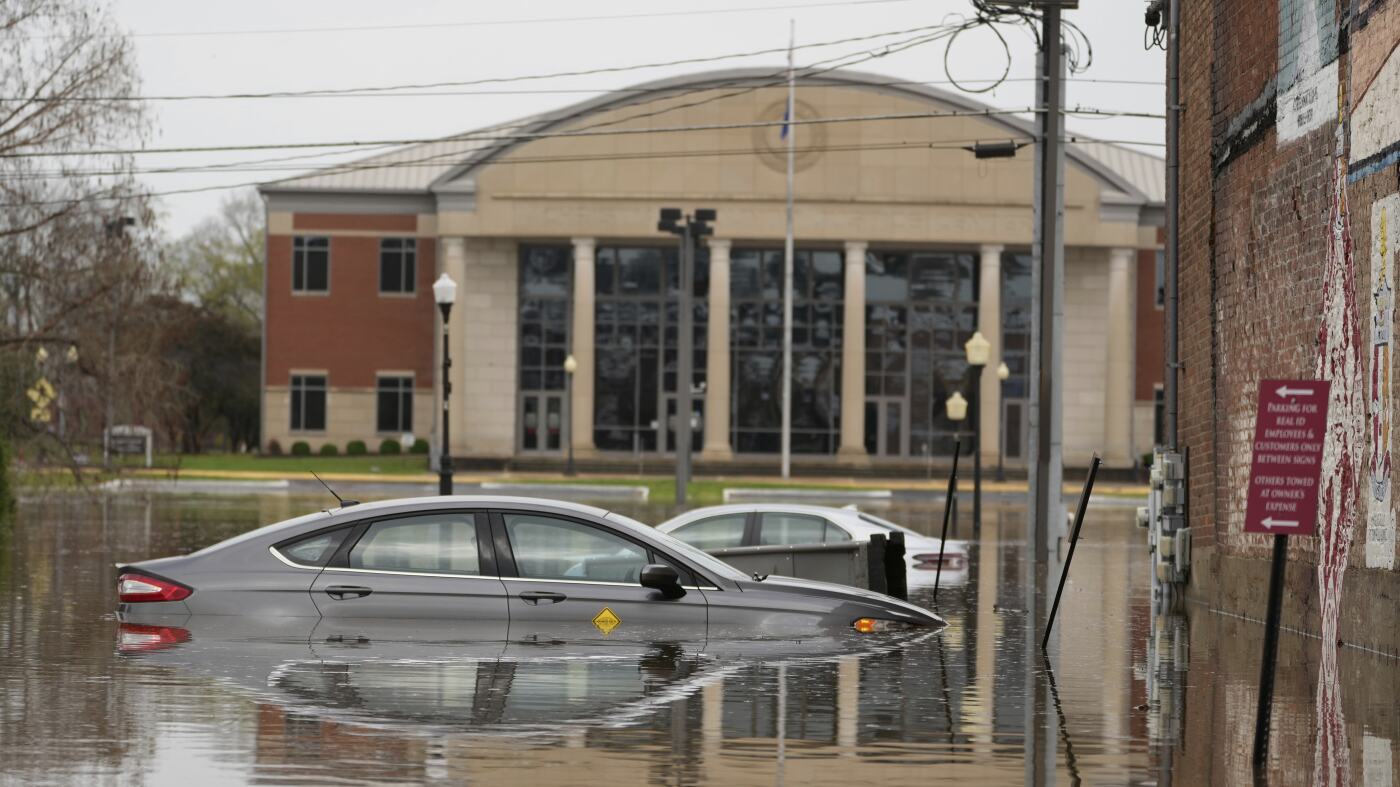Severe Weather Continues to Batter South and Midwest
The central United States is bracing for yet another onslaught of heavy rain and flash flooding this weekend, adding to the woes of regions already grappling with the aftermath of severe storms. The storms, which have unleashed torrents of rain and spawned deadly tornadoes, continue to threaten parts of the South and Midwest.
The National Weather Service (NWS) warns that 45 river locations across multiple states could reach major flood stages, potentially inundating homes, roads, and critical infrastructure. This dire situation follows days of relentless rainfall that have triggered flash flood emergencies in Missouri, Texas, and Arkansas.
Communities are dealing with the devastation left by tornadoes that have claimed at least seven lives and destroyed entire neighborhoods. In Kentucky, a 9-year-old boy tragically lost his life in floodwaters, according to state officials.

Cars sit in a flooded street in Hopkinsville, Ky., on Friday. George Walker IV/AP
Extreme weather has implications for interstate commerce, as well. Jonathan Porter, chief meteorologist at AccuWeather, noted that the flood-prone corridor encompassing Louisville, Kentucky, and Memphis, Tennessee — both major cargo hubs — could suffer shipping and supply chain disruptions.
The ongoing weather crisis is compounded by staffing challenges at NWS, where nearly half of its forecast offices are understaffed by 20%, a result of workforce reductions during the Trump administration.
Hopkinsville, Kentucky, saw floodwaters recede slightly early Saturday, providing temporary relief, yet more rain is expected over the weekend, according to Mayor James R. Knight Jr.
“We got a little rain but most of it went north of us,” Knight said Saturday. “Thank goodness on that. Gave us a little break.”
Flash Flood Threat Continues
Flash flood warnings persisted in Arkansas, Mississippi, and Tennessee, with predictions of further severe weather. Tennessee weather officials expect conditions to improve after Sunday, posting optimistically, “The finish line is in sight!” on social media.
In Hopkinsville, further rains could add 3-4 inches, leading to more flood preparations, Christian County Judge-Executive Jerry Gilliam reported.
“We anticipate this water coming back quickly if it comes down quickly,” he said. “There are supposed to be three or four bursts of heavy rains throughout the day.”
As light rain continued to fall, local jail inmates assisted in filling sandbags, with 20 bags allotted per resident.
In Kentucky, floodwaters, fallen trees, and landslides have rendered hundreds of roads impassable, with more closures likely, stated Governor Andy Beshear. Flash flooding poses a particular risk in rural areas where water can rapidly flow into valleys.
Ohio also experienced flooding, with Governor Mike DeWine reporting about 70 road closures. Moderate flooding is anticipated in the southern part of the state, a phenomenon not seen in four years.
Understanding the Cause
The severe weather conditions are attributed to a combination of warm temperatures, unstable atmospheric conditions, strong wind shear, and moisture from the Gulf of Mexico.
Friday evening saw tornado sightings in Missouri and Arkansas, with one tornado near Blytheville, Arkansas, launching debris 25,000 feet into the air, according to meteorologist Chelly Amin. The state’s emergency management office reported damage in 22 counties due to tornadoes, winds, hail, and flash flooding.
Tennessee Governor Bill Lee described a tornado in Selmer as “completely wiping out” neighborhoods, with winds reaching up to 160 mph. Advance storm warnings likely saved lives as hundreds sought refuge in a courthouse.
Mississippi’s governor reported damage to at least 60 homes, and in far western Kentucky, four individuals were injured while sheltering under a church carport, as reported by Ballard County’s emergency management office.
This article was originally written by www.npr.org






